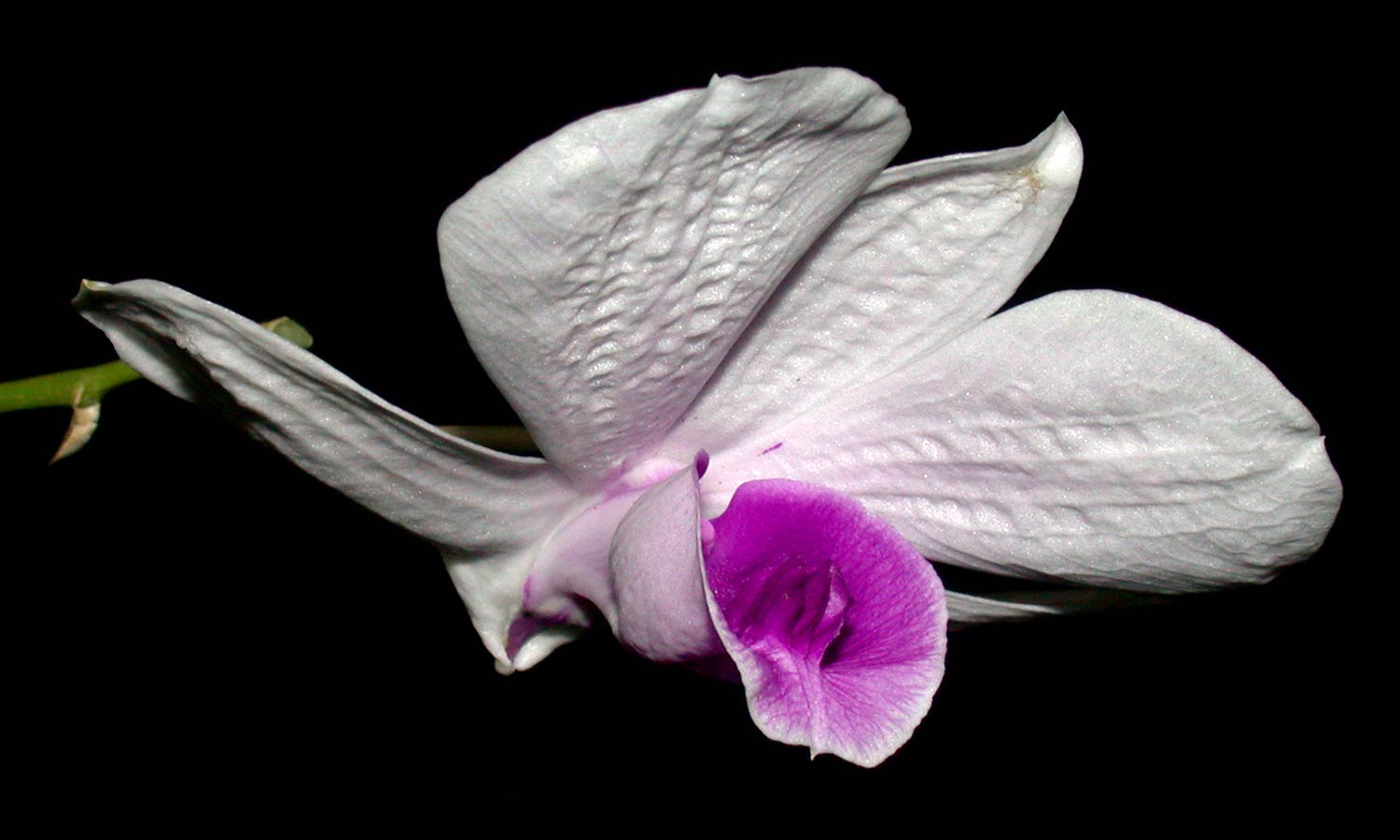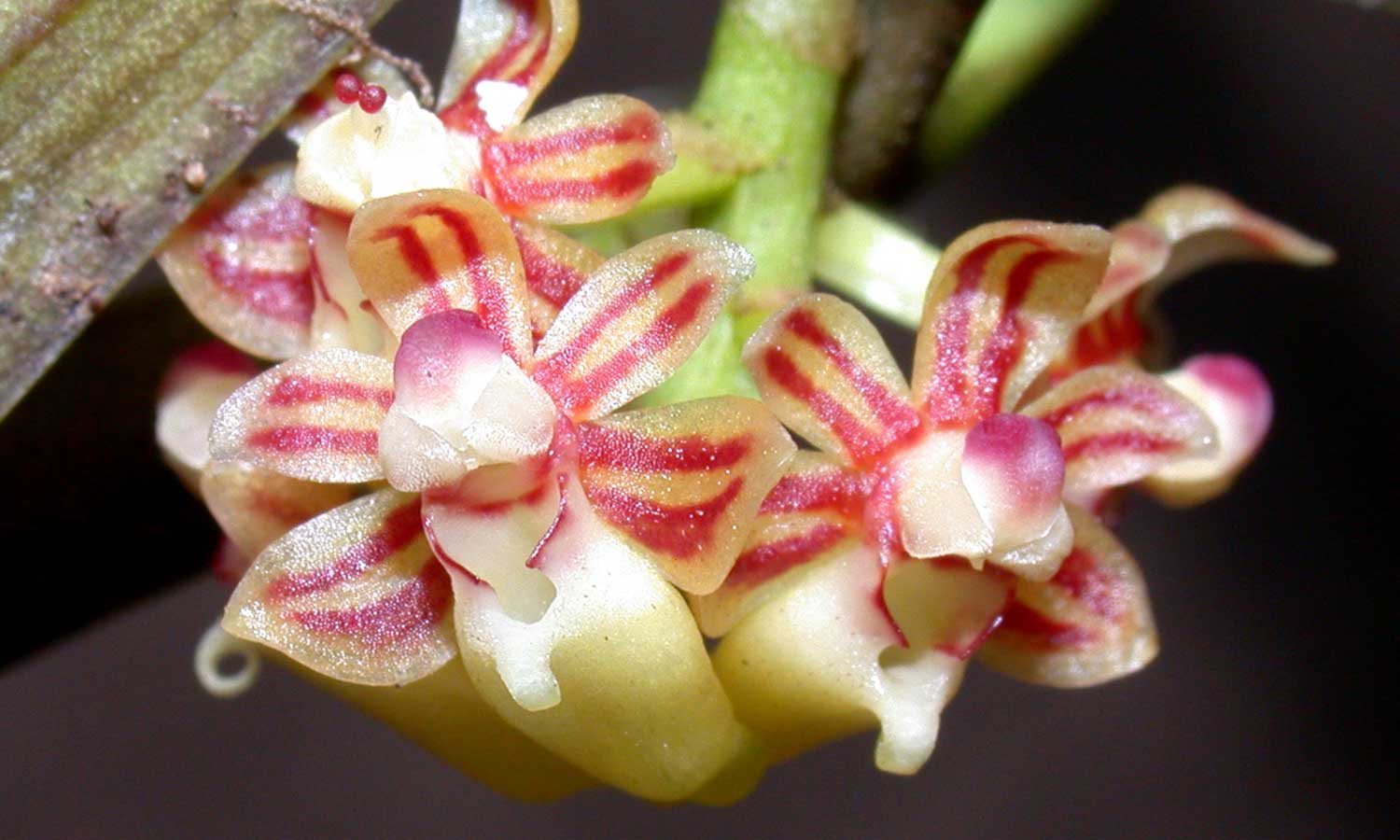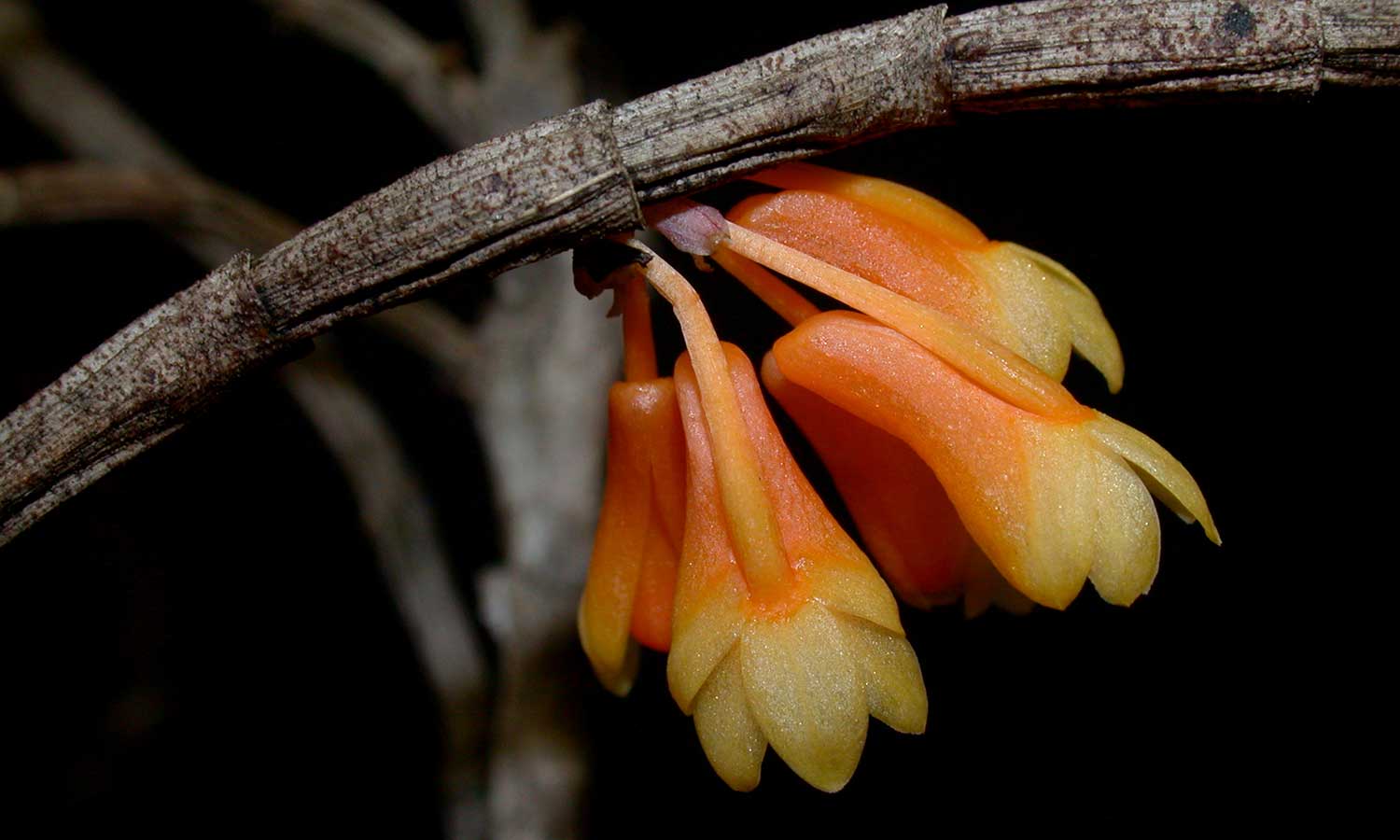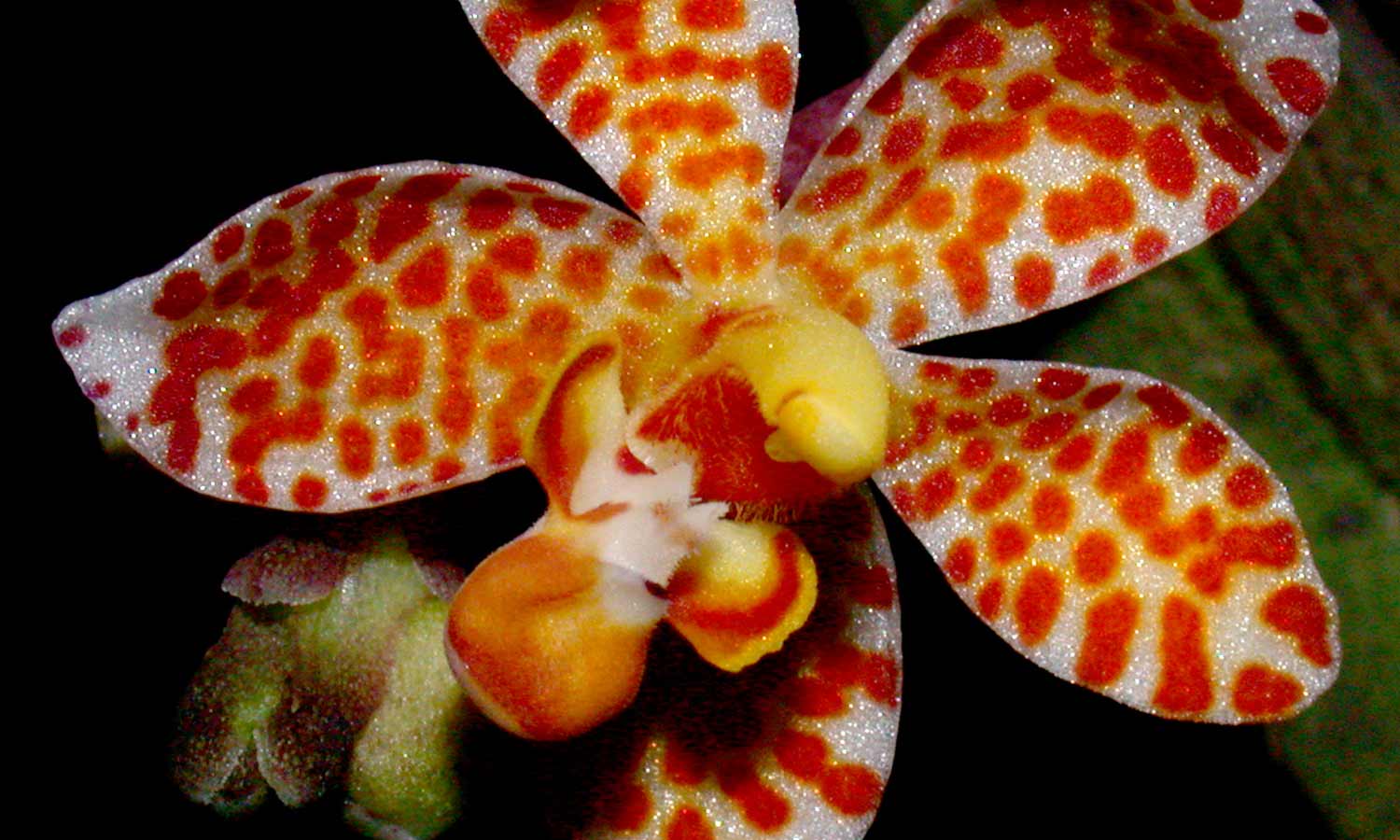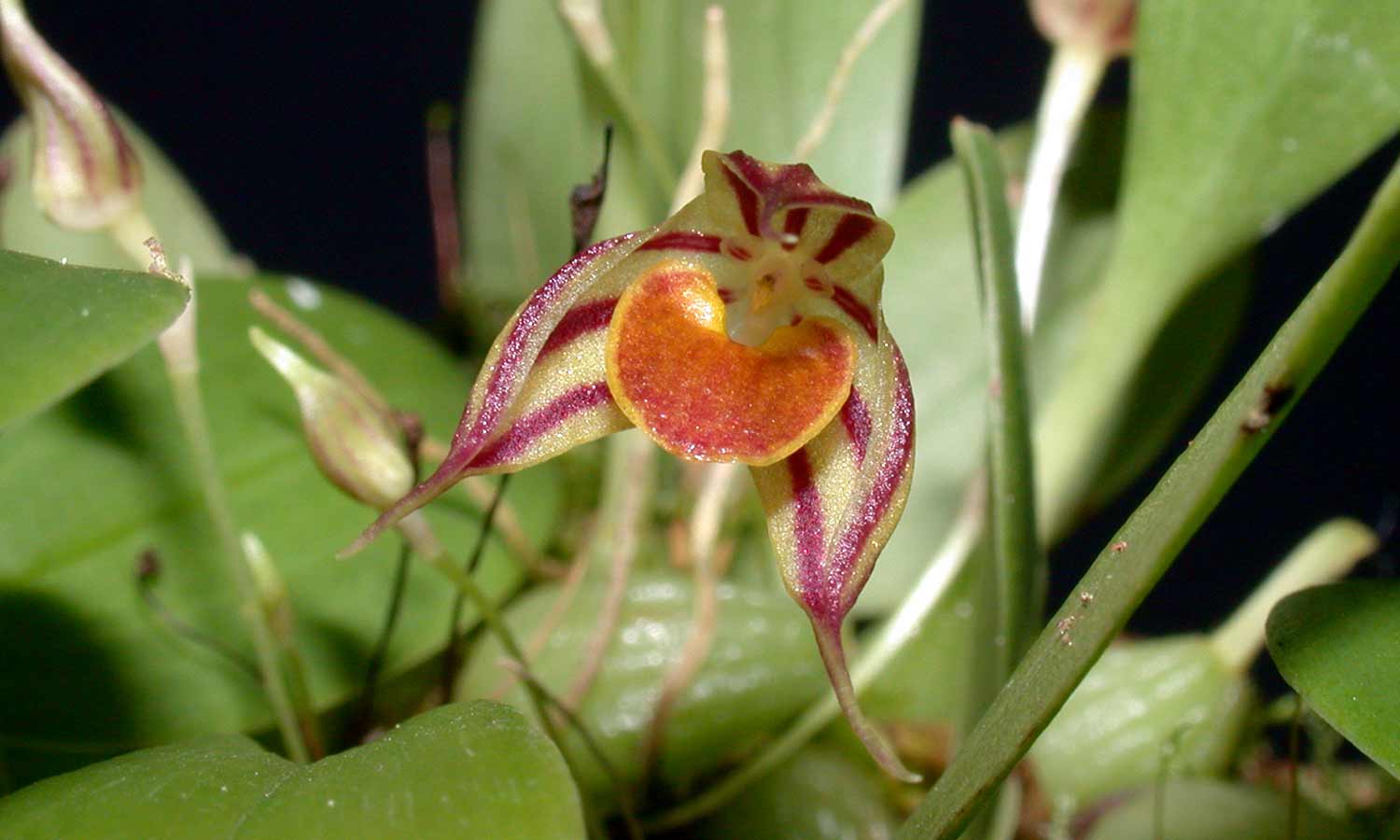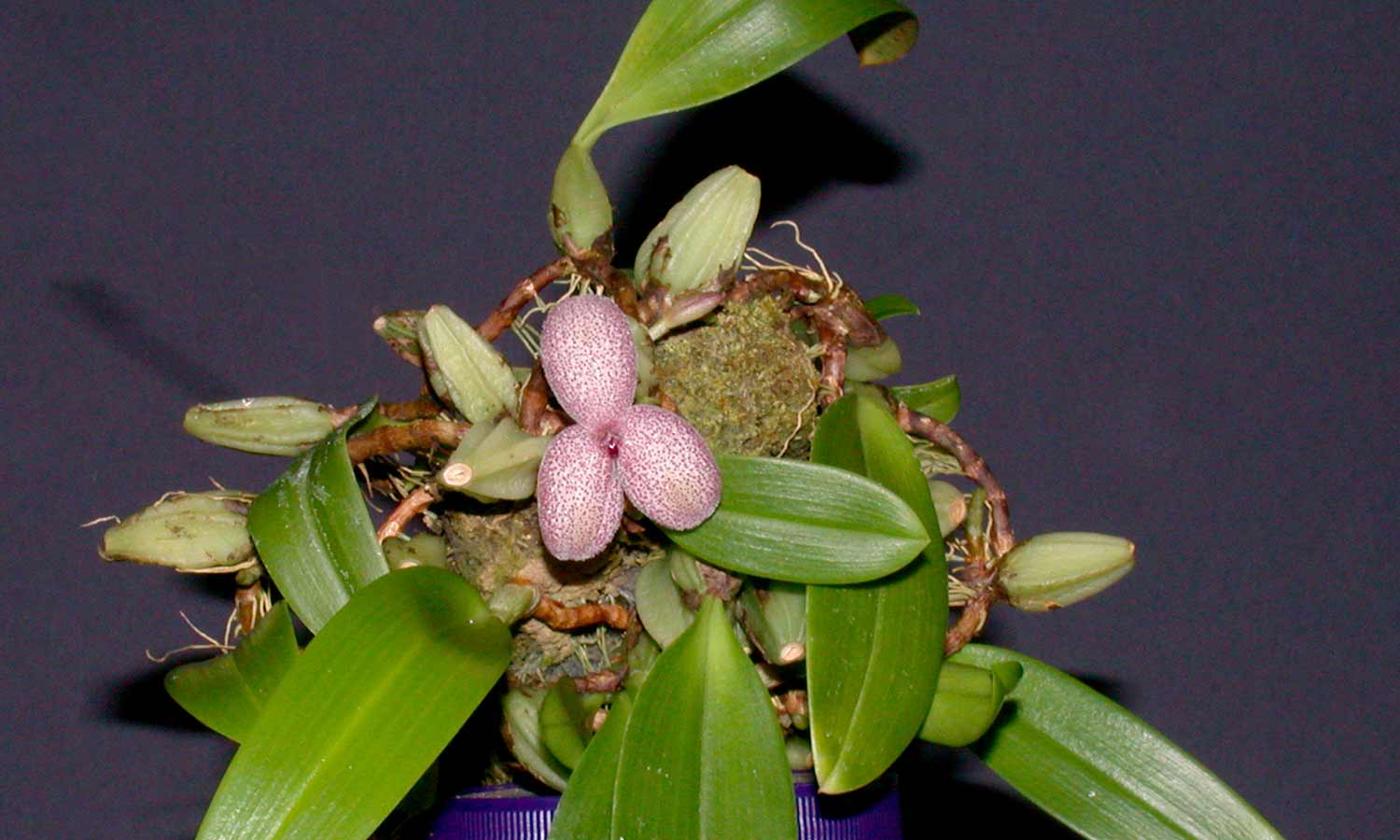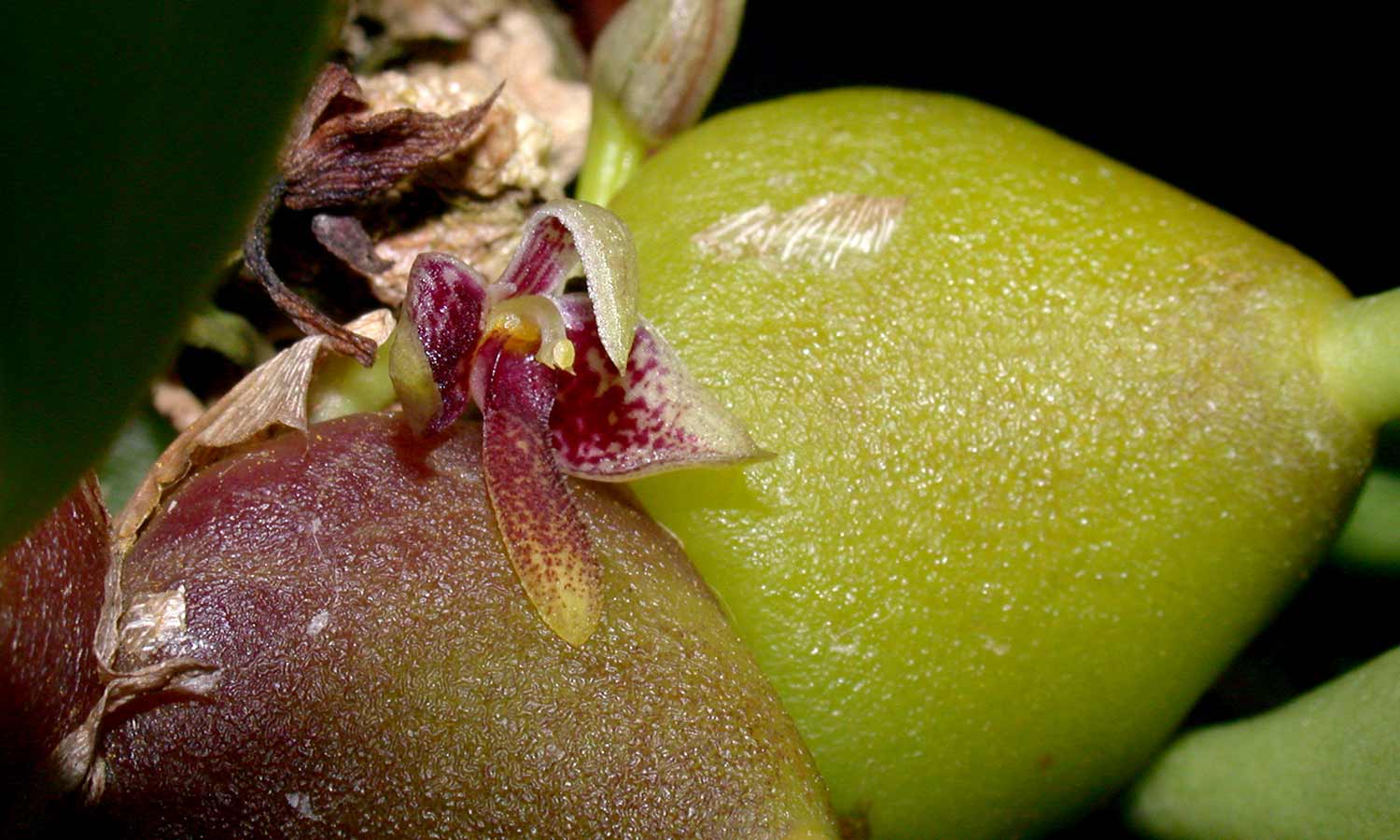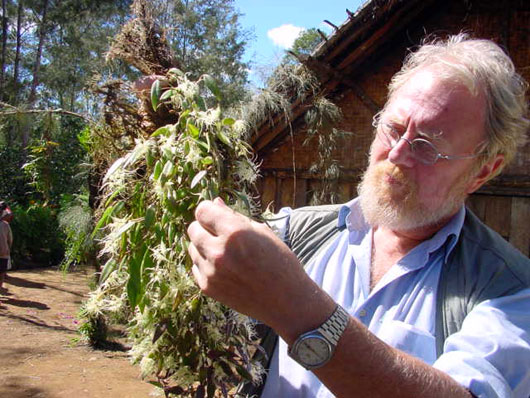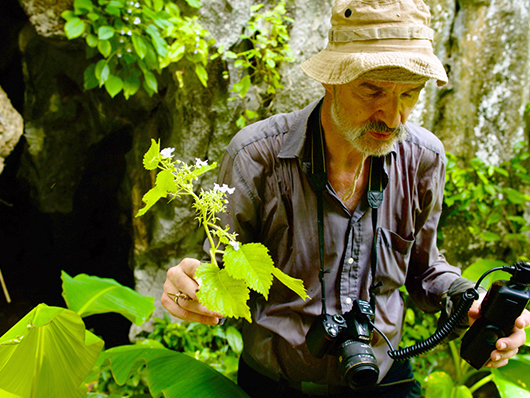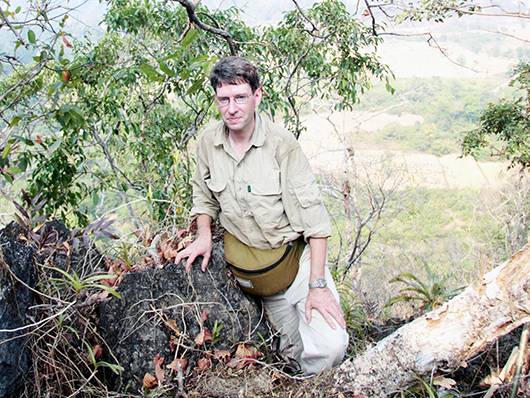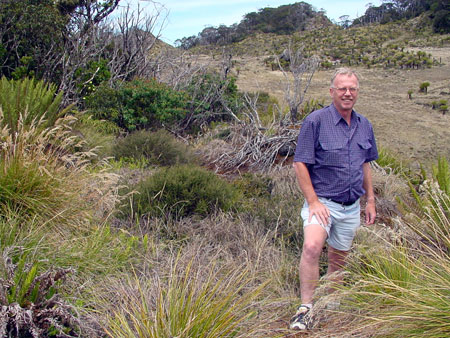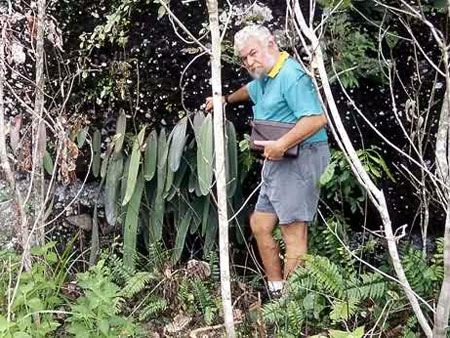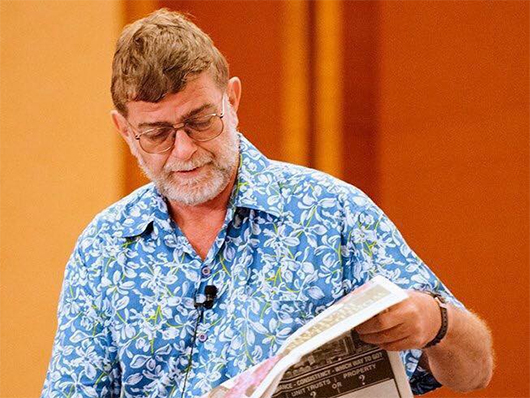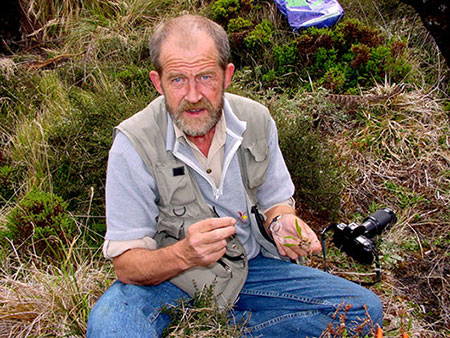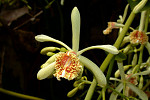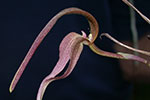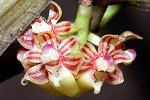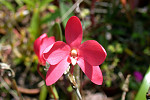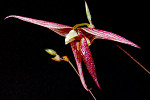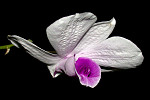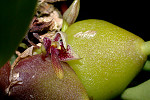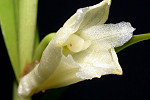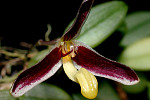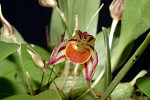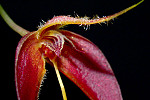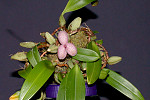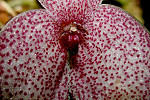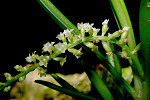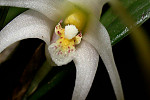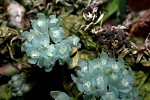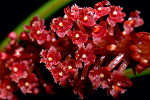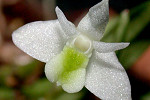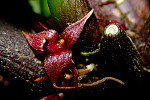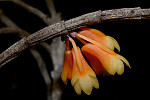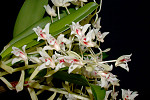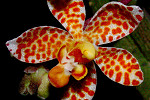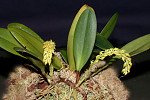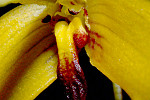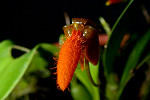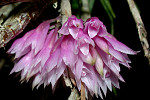Welcome to Orchids of New Guinea
The huge and, in many ways, mysterious island of New Guinea is home to some of the most beautiful and interesting creatures in the world. Most notably birds of paradise, cassowaries, tree kangaroos and other Marsupials, the Monotremes Platypus and Echidna, and birdwing butterflies inhabit the dense forests that still cover large tracts of the plains and the rugged mountain ranges. New Guinea also harbors a tremendous number of orchids, certainly in excess of 3000 species. They can be found almost anywhere, from the hot mangrove swamps and beach forests to the chilly grasslands above the timberline on the highest mountains. In the altitude range between the upper hill forests to the misty montane moss forests their abundance and diversity can be staggering, in number of species as well as specimens.
Even today our knowledge of most of these orchids is still very poor. On one hand many genera, especially the large ones, have not or only partly been revised. Where revisions were made many synonyms came to light, although still relatively few compared to revisions of orchids from mainland Southeast Asian and West Malesia, because only very few taxonomists worked on New Guinean orchids. On the other hand it is equally certain that many hundreds of species still await discovery, or at least await description in case they are lying unrecognised in a Herbarium. The continuing stream of new species described by specialists like Tom Reeve, Mark Clemens, Paul Ormerod, the late Peter O'Byrne, Jaap Vermeulen and the authors of this paragraph, and the large number of specimens that are already recognised as new of which many are already described and are waiting in manuscript to be published supports that idea. It is therefore impossible at this stage to give an accurate estimate of the number of species occurring in New Guinea. A safe guess would be somewhere between 3500 and 4000 species, or, to put it differently: fifteen to twenty percent of the world's orchids are to be found in New Guinea. Only some areas in the Andes may possibly be richer in orchid species than New Guinea.
This is where this website Orchids of New Guinea fills a gap. It contains descriptions of all presently recognised 142 genera (January 2020) and just over 2900 species descriptions, and in addition the huge gallery of coloured orchid images, distribution maps, drawings and images of type specimens, more than 17000 in total.
Those who want to become thoroughly acquainted with New Guinea orchids should study the works of Rudolf Schlechter, (1872-1925), J.J. Smith (1867-1947), and other botanists. Valuable though these works are, they are not easy to consult because they consist largely of species-descriptions in Latin, and they do not contain coloured illustrations and rarely an illustration is given of the entire plant, while photographs of type specimens are entirely absent. They can only be found in very few, unusually well-stocked libraries and are scarcely present in institutes and universities in New Guinea. A modern overview, which provides the means to identify all genera known to occur in New Guinea, with every species described and where available depicted, was long overdue, and is presented in this website.
From 1986 onwards the Rijksherbarium / Hortus Botanicus published the journal Orchid Monographs, of which 8 volumes appeared which contain revisions of 31 genera and sections of orchids, all except 3 from the Malesian region. This journal was stopped in 1997. The Editor of this journal, Ed de Vogel, had been coaching two PhD students with their fieldwork in the Birds Head of Indonesian New Guinea in 1993 and 1996, and was during these visits of a month each and a last trip in 1998 to the area involved in general plant collecting. He was struck by the enormous richness of the orchid flora there compared to the other islands in Malesia where he had done fieldwork earlier, and noticed the very limited number of modern works to identify these orchids. There the first idea for building an information system for New Guinea orchids was developed. Ed de Vogel and André Schuiteman devised a plan to set up a documentation system that would ultimately cover all orchids of New Guinea. They had already developed (and still maintain) a database named ASORCH which contains the names of all orchids of Asia with information about first publication, rank, types, synonymy, and that also contains for each species information where it has been collected. That was an ideal basis for the intended documentation system. They considered that realising such a work in print would produce an extremely expensive publication, especially with the vast number of colour photographs and drawings which would be needed to illustrate the species and to make the work attractive. They found an alternative which was infinitely cheaper.
At that time the Expert Center for Taxonomic Identification (ETI), then a Non-Governmental Organisation (NGO) in operational relations with UNESCO, had developed an electronic documentation system which could store large amounts of taxonomic data in an attractive layout, which could be stored on CD-ROMs and which could be read on monitors. ETI was a not-for-profit electronic publishing house dedicated to improving on a global scale the quantity, quality, and accessibility of taxonomic information. By the time the plans for the documentation system for orchids had crystallised the teething problems of ETI's software had been largely solved, and it was decided that their system was adequate for the information system of orchids in mind.
Some funding was obtained from the Rijksherbarium / Hortus Botanicus to start up a pilot project. In 1996 work started to produce a Demonstration CD-ROM with a selection of Malesian species, to showcase the potential of the CD medium for Flora publications. Ed de Vogel was permitted to spend 20% of his time on this project, and André Schuiteman received an 80% appointment for building the application and implementing it. That CD-ROM appeared in 1997, and was used to raise interest in the project among potential sponsors. Through intermediation of Phil Cribb, then Senior Orchid Taxonomist at the Herbarium of Royal Botanic Gardens Kew, contacts were made with potential sponsors in Singapore and Australia, with as result that two organisations, the Cheng Kim Loke Foundation in Singapore and the Australia and Pacific Science Foundation committed themselves to a long-lasting sponsoring of the project, which allowed a full time appointment for Schuiteman. The intention at the time was to build a system for all orchids of the entire Malesian area, some 9000 species. It was decided to work on a regional basis and to start with New Guinea first.
It was realised that making revisions of every genus before publishing them on the CDs would take so long that the project would never be completed. It also appeared that around two-third of the described species was known from one or two specimens only, so redescribing these from the herbarium specimens (often scanty, if any) would in most cases not add any significant information, and bring damage to the precious type material. All early descriptions by Schlechter and J.J. Smith were in Latin. The decision was made to translate all these type descriptions into English, a mammoth task because at that time no adequate translation programs Latin-English or Latin-Dutch existed. All literature was digitised and put together in one enormous file and then the Latin words were translated word for word. This delivered texts in scrambled English, but since the large majority of descriptions were made by 5 taxonomists only the texts were fairly uniform in sentence construction and many partial sentences could be transformed by changing them throughout the entire text into strings of words which made sense. Standard, under each description the source was indicated.
In 1998 work was started on the first CD-ROM:
A. Schuiteman, E.F. de Vogel. 2001. Orchids of New Guinea vol. I; Illustrated Checklist and Genera. ISBN 90-75000-20-0
For practical reasons the genus Dendrobium with their direct relatives were chosen as the second subject to deal with: A. Schuiteman, E.F. de Vogel. 2002. Flora Malesiana: Orchids of New Guinea vol. II; Dendrobium and allied genera. ISBN 90-75000-43-x A few revisions of sections of this genus had appeared, and since several of its sections contain many species of interest for horticulture, more knowledge was present on Dendrobium than on any other New Guinean orchid genus. Cooperation with photographers of New Guinea orchids and Institutes like the Herbaria of Kew, Edinburgh and Leiden was sought and obtained, and funding was received from the Dutch Van Tienhoven Foundation to digitise many hundreds of photographs for this second CD, since at that time digital cameras were scarcely used, very expensive and they did not produce high resolution photographs. No software was available to us to create distribution maps, but it was considered important to provide maps for those species for which the data were readily available. Thus, some 100 maps were made by hand, and in the Leiden herbarium additional localities were searched for among the unidentified specimens, so many maps were improved with additional specimens.
Sponsored Ads
ABOUT THE ORCHIDS OF NEW GUINEA WEBSITE, ITS AUTHORS & CONTRIBUTORS
The Orchids of New Guinea website is a collaboration of works done by the following individuals:
ITS AUTHORS
ITS MAIN CONTRIBUTORS
This website and it's contents is now accessible free of charge to all Orchid enthusiasts!
The basis of the present website are the 6 CD-ROMs authored by André Schuiteman, Ed de Vogel and Jaap J. Vermeulen, published by the Leiden branch of the Nationaal Herbarium Nederland (NHN). Many contributors added bits and pieces to this work, published by the Leiden branch of the Nationaal Herbarium Nederland (NHN, first known as Rijksherbarium) and Hortus Botanicus Leiden, formerly both part of the university of Leiden, the oldest university in the Netherlands, but later separated when the NHN became part of Naturalis Biodiversity Center.
The basis of the present website are the 6 CD-ROMs authored by André Schuiteman, Ed de Vogel and Jaap J. Vermeulen, published by the Leiden branch of the Nationaal Herbarium Nederland (NHN). Many contributors added bits and pieces to this work, published by the Leiden branch of the Nationaal Herbarium Nederland (NHN, first known as Rijksherbarium) and Hortus Botanicus Leiden, formerly both part of the university of Leiden, the oldest university in the Netherlands, but later separated when the NHN became part of Naturalis Biodiversity Center.
The CDs are no longer readable by modern computers and therefore the website https://orchids.naturalis.nl/ was created, containing every bit of information available on the 6 CDs.
Later the contents were moved to the present website orchidsnewguinea.com, and the contents were augmented with many dozens of improved species descriptions, with much higher quality images and with addition of some 200 new species descriptions of species that appeared after the CD-ROMs had been published, as well as large amounts of new photographs.
This website is the result of more than 100 years of research of the orchids of New Guinea and improved with ongoing research by the authors of the CD's and many other researchers.
On this website you will find:
- Complete list and descriptions of all orchid genera of New Guinea
- A complete list and descriptions of all New Guinea orchid species in all genera
- The equivalent of some 30,000 pages of printed text
- A vast collection of photos and line drawings (c. 17000, including c. 1000 stereo images) of the orchids of New Guinea. New photos are added on a regular basis.
- Maps of orchids occurring in the wild
- A huge amount of background information, history of orchid research, habitats, vegetation zones, orchid culture and much more.
The website has been is built and is maintained by developers from Cybermasta Limited. A small web development company based in Papua New Guinea.
In references this website can be cited as:
E.F. de Vogel, J.J. Vermeulen and A. Schuiteman, Orchids of New Guinea. URL: www.orchidsnewguinea.com
SOME OUR FAVOURITE NEW GUINEA ORCHIDS
Sponsored Ads

